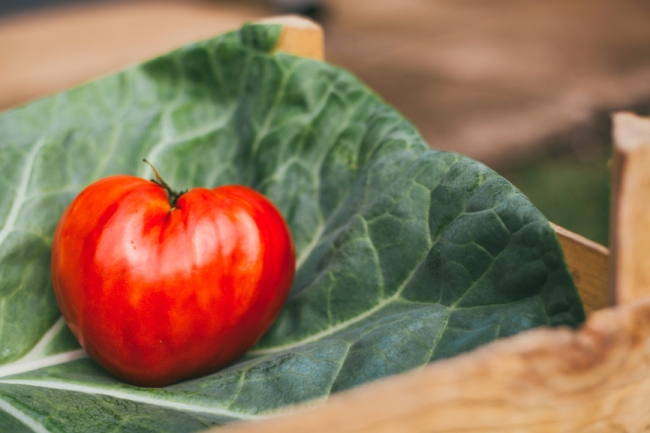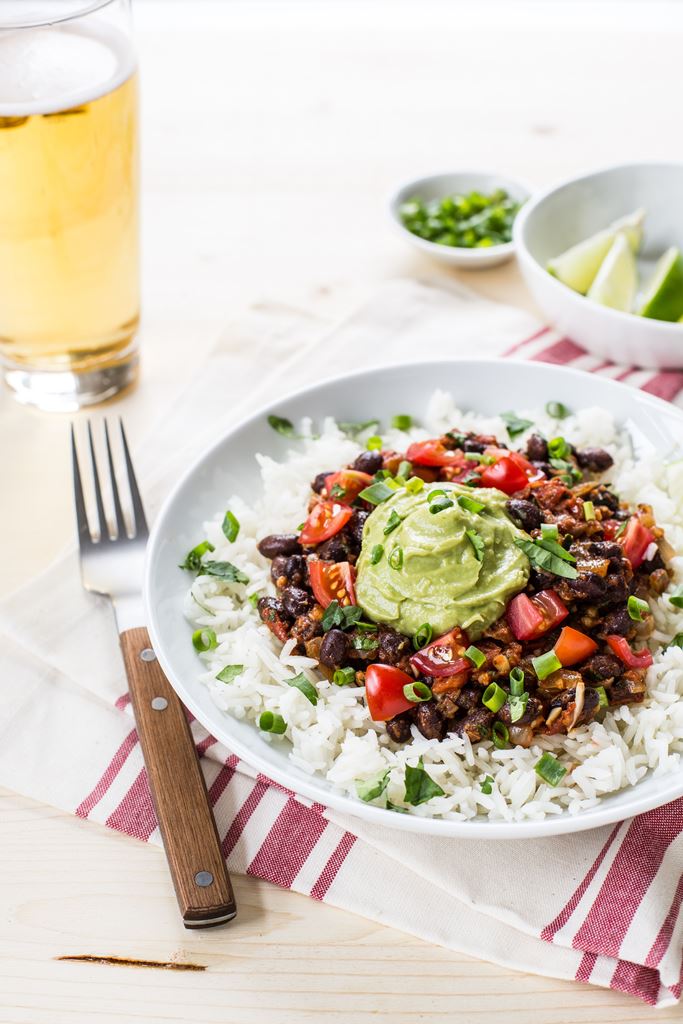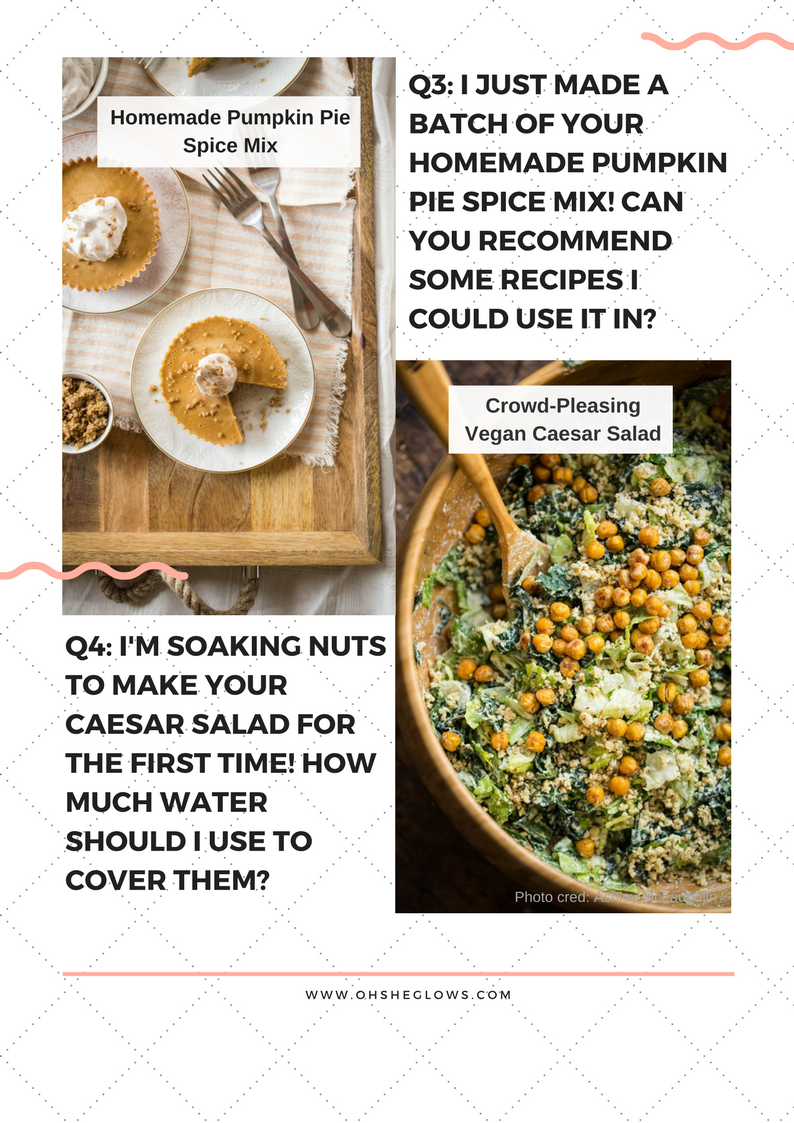“Will decades of dieting mean a broken metabolism?” It’s a common anxiety. Case in point: The Biggest Loser, whose contestants are famous for dramatic weight loss — and for the devastating regain that sometimes follows. In this article, we break down a study examining exactly what happened to their metabolisms — and what this means for everyone else who wants to lose weight and keep it off.
++++
“I lost a bunch of weight, and then I regained it…
..Did I screw up my metabolism? Will I ever be lean again?”
We hear this all the time from new Precision Nutrition Coaching clients. And, in a culture where weight loss is not only a personal goal, but a big TV moneymaker, it’s no wonder that folks feel anxious: We watch folks on the public stage slim down, then blow up again, all the time.
Take The Biggest Loser — perhaps the most famous example of this type of made-for-TV metabolic drama.
Competitors running on treadmills with tears streaming down their faces. Trainers screaming. How-this-happened-to-you montages set to emotive music. “Before” jeans juxtaposed with new, slim bodies.
And then…a devastating return to their old bodies in the months that followed.
So is it possible to lose a lot of weight, and keep the weight off? What can The Biggest Loser teach us?
In this article, we’ll look at an academic study that examined exactly what happened to their bodies, and what this means for you.
Here’s the media narrative of what happened:
- The Biggest Loser contestants regain most (or all) of the weight once cameras get turned off.
- This is caused by and/or leads to damaged metabolisms, psychological trauma, and shame.
- Trying to lose weight and keep it off is hopeless.
But is this story true?
What does the study prove?
And is it really impossible to sustain weight loss?
Let’s dig a little deeper.
Research questions:
What happens to the body weights and metabolisms of The Biggest Loser contestants in the years after they appear on the show? Why? What does this mean for regular folks who want to lose weight and keep it off?
Fothergill E, Guo J, Howard L, Kerns JC, Knuth ND, Brychta R, Chen KY, Skarulis MC, Walter M, Walter PJ, Hall KD. Persistent metabolic adaptation 6 years after “The Biggest Loser” competition. Obesity (Silver Spring). 2016 May 2. doi: 10.1002/oby.21538.
To explore these questions, this study looked at three key indicators in 14 men and women who participated in season 8 of The Biggest Loser (2009):
- Body composition is someone’s ratio of fat mass to lean mass (muscle, bone, etc.). For good health and physical function, we want less fat mass and more lean mass in general.
- Resting metabolic rate (RMR) is the number of calories a resting body burns in a day, without activity. Weight loss aside, smaller bodies require less energy to maintain and should have lower RMRs. Bigger bodies require more energy and should have higher RMRs.
- Leptin levels: Leptin is a hormone that, among other things, gets released after we eat, suppressing our appetite and increasing energy expenditure to help keep our calories in / calories out balanced and our weight stable. In general, the more fat cells in your body, the higher your leptin. Since leptin helps regulate RMR, the two should rise and fall together.
Now, in case you’re not caught up on your reality TV watching, here are a few important things to know.
- When the filming starts, The Biggest Loser participants are morbidly obese (exceeding their ideal weight by 100 pounds or more).
- Over the course of 30 weeks, they’re supervised and coached by the show’s trainers and doctors.
- Contestants eat a diet restricted to about 1200 calories per day.
- Contestants do at least of 90 minutes of intense exercise per day, 6 days a week.
- After filming the show, contestants return to “real life” without continued supervision or guidance as to how to maintain their nutrition and exercise regimen.
Methods
Initial assessment
Before their first appearance on the show in 2009, contestants went through a battery of tests that assessed things like:
- RMR (in other words, basic metabolic activity of being alive)
- physical activity expenditure (in other words, exercise)
- total energy expenditure (how much energy people were expending in a day through metabolism and physical activity together); and
- blood chemistry.
Follow up
In 2015, six years after their run on the show, subjects returned to the laboratory for a complete follow-up.
Two weeks before the study officially started, participants weighed themselves on a special digital scale that transmitted their data to the researchers.
This early start helped ensure that people didn’t try to change their weight before the study began, which would skew the results.
Once in the lab, researchers again measured the subjects’ RMR, total energy expenditure, and physical activity expenditure. They also performed bloodwork.
They then compared the results of their 2015 testing and their 2009 testing. Here are the results…
Results
Weight
Average weight before filming The Biggest Loser: 328 lb.
Average weight after 30 weeks on The Biggest Loser: 199 lb.
Average weight six years after final on camera weigh-in: 290 lb.
This means that, on average, participants regained 70 percent of the weight they’d lost. (Although they did keep off 30 percent of it.)
Resting metabolic rate
Average RMR before filming: 2,607 kcal burned / day.
Average RMR after 30 weeks on the show: 1,996 kcal burned / day.
Average RMR six years after final weigh-in: 1,903 kcal burned / day.
Surprisingly, despite their weight regain, participants were burning 700 fewer calories per day at rest vs. when they started the show. This is about 500 fewer calories than we’d expect them to burn based on predictive equations that take into account their body weight.
Lean body mass (an indication of muscle mass)
Average lean body mass before filming: 167 lb.
Average lean body mass after 30 weeks on the show: 142 lb.
Average lean body mass six years after final weigh-in: 155 lb.
Participants lost 25 lbs of lean mass during the filming of the show. They did end up gaining about 13 lbs of it back. However, that didn’t help to elevate their RMR, as we might have expected.
Leptin
Average leptin before filming: 41.14 ng/mL
Average leptin after 30 weeks on the show: 2.56 ng/mL
Average leptin six years after final weigh-in: 27.68 ng/mL
As you’d expect, participants’ leptin levels went down when fat decreased, and went up again when fat came back.
So, why did they regain the weight?
That’s a complicated question. But the study’s findings give us big clues, and new discoveries for our understanding of metabolism.
Many people assume that weight loss — and sustaining weight loss — is purely psychological.
If you don’t have the mental strength and willpower to pass on the chili cheese fries, then you’re essentially choosing to gain back the weight, right?
But the Biggest Loser data illuminate the important physiological roadblocks contestants face.
Metabolic adaptation
We already know that when you lose weight, your metabolism slows. This is called metabolic adaptation, and it’s normal.
Metabolic adaptation is a natural defense mechanism against starvation. When you’re dieting, at a certain point, your body will send up a red flag.
Starvation alert!
There’s not enough food to go around!
Hold onto the fat reserves!
At that point, your RMR slows.
Metabolic adaptation can make things more complicated (and frustrating) for dieters who hope to continue or maintain their weight loss.
Once their body’s red flag goes up, calorie restriction no longer has the same effect it did at the beginning of their diet.
Suddenly, they need to cut more calories just to maintain the same weight.
While this is sometimes framed as metabolic damage, it’s really just your body’s way of trying to keep you alive and well.
What was interesting about this study? It showed that participants’ RMR stayed low despite:
- Weight regain: Even though participants were larger six years later, they weren’t burning more calories at rest.
- Muscle maintenance: Theoretically, the more muscle you have, the more calories you burn at rest. But it’s not helping these participants’ RMR.
- Time passing: We used to think that metabolic adaptation may reverse with time, and it might. But here we see that even six years isn’t enough.
In the end, as you can see in the following graph, participants’ metabolisms were just as low after six years (and after regaining almost 100 pounds) vs. the end of the show, when they were their lightest.
Leptin
As expected, The Biggest Loser participants experienced a huge drop in leptin when they lost weight in 2009. When they regained weight, leptin rose accordingly. But there are two sticking points here:
- “Normal” leptin doesn’t mean it’s easy to control your appetite. Pre-Biggest Loser, these folks were used to eating a certain amount; now they need less to stay smaller. Of course, if they (unconsciously) went back to those same amounts, rather than following their natural physical satiety signals, it’s easy to understand why they gained weight.
- The participants’ leptin and RMR are no longer linked. If the two usually rise and fall together, why didn’t RMR go back up — as leptin did — when the weight was regained? This could also lead to weight regain. Even if participants followed hunger cues and stopped eating when satisfied, they’d be eating more than needed considering their low RMR.
Putting all this together, in order to sustain their weight loss, The Biggest Loser participants would have to:
- Eat 500 fewer calories per day than their bodies are telling them to eat. That’s 25 percent less than a person who always weighed 199 pounds or never experienced significant weight loss.
Or…
- Expend 500 more calories a day than their bodies tell them they should. That’s an intense workout — like running fast for an hour.
All while…
- Feeling hungrier than they should. Again, the participants’ leptin levels may be normal — but since their metabolic rate didn’t rise with it, eating with their physical hunger cues may actually cause them to consume more calories than they’re burning.
Yea, that sucks. No wonder these folks have trouble keeping the weight off.
Does this mean it’s impossible to sustain weight loss?
It’s clear that, when you lose a lot of weight, you’re up against a lot of very real physiological changes if you want to maintain the weight loss.
But there’s a lot of important information we don’t have about The Biggest Loser contestants.
What goes on behind the scenes?
The Biggest Loser is a television program. It’s not itself a controlled research group or scientific experiment. With this study, researchers are trying to make sense of what happened after the fact.
The initial conditions themselves are mostly a mystery. That means all kinds of factors could have influenced the outcomes.
- What kinds of foods were they eating?
- Were they eating whole foods or processed “diet” foods?
- Did they take any supplements or drugs?
- Could psychological stress have played a role?
We just don’t know. But all of these factors could affect the contestants’ ability to sustain weight loss.
What are the participants’ lives like?
The participants reported maintaining the Biggest Loser-approved nutrition regimen and exercise level over the six-year period. But: Self-reported data are notoriously unreliable. It’s not a flaw of these particular people, it’s just how humans work.
Some of the participants were able to keep weight off for years before it returned. So questions arise like:
- Is the weight regain the result of unfortunate physiology, exclusively?
- Are they eating more and exercising less than they think they are?
- Is psychological stress from weight regain in a public setting playing a role?
Here again, we don’t have answers, and all of this can affect a person’s ability to maintain their weight.
Did they regain the weight because they lost it so quickly?
The Biggest Loser program helps contestants lose weight at a rate you rarely see elsewhere. Many people are speculating that this is the reason for the participants’ persistent metabolic adaptation and weight regain.
That’s a convenient explanation, but not necessarily an accurate one.
Another study compared The Biggest Loser participants’ weight loss with gastric bypass (Roux-en-Y) patients about six months after surgery and found something surprising.
- The two groups lost a comparable amount of weight in half a year, but the gastric bypass patients experienced half the metabolic adaptation.
- After a full 12 months, and after losing even more weight, the gastric bypass group had a very slightly higher metabolism than predicted (+8 calories per day).
- What’s more, the gastric bypass group didn’t lose any more muscle (lean mass) than The Biggest Loser group, despite not having structured exercise program.
Obviously, gastric bypass is about as fast as it gets. So how fast you lose the weight isn’t likely the determining factor.
But even if The Biggest Loser study suggested that rapid weight loss is not effective, there’s no reliable data indicating that slow weight loss is more effective.
Nevertheless, it’s not impossible to sustain weight loss.
Some people found this study — and its media interpretations — really disappointing. If the body fights back against weight loss, does that mean there’s no hope for folks who have a lot to lose?
Others found the results somewhat reassuring. It relieved some of the sense of failure or shame around re-gaining weight. It acknowledged the difficulty and proved that it’s not all mind over matter.
But, while this study does reinforce the importance of compassion, it doesn’t indicate that long-term weight loss is impossible.
The study suggests that extreme dieting comes with consequences. Reduce your calories to an extreme and your body will likely fight back. Maybe for years. Maybe forever.
But you can sustain weight loss for the long term by effectively controlling your energy intake during (and after) whatever nutrition program you choose.
Five strategies to sustain weight loss.
1. Use a habit-based approach.
A more sustainable, habit-based approach that doesn’t include a drastic calorie deficit could give you a better chance at adapting — physiologically and psychologically — to a healthier lifestyle, without your metabolism coming to a screeching halt.
This point of view is consistent with The Biggest Loser paper, which closes with recommendations to focus on health markers like insulin and triglyceride levels rather than weight loss, and to take a more moderate approach with exercise and calorie reduction.
In Precision Nutrition Coaching, we use a habit-based approach to gradually — over the course of a full year — introduce our clients to small, manageable daily practices that support healthy eating and movement.
We keep in touch with past clients, and in the overwhelming majority of cases we’re hearing that the habits continue working to help them regulate their energy intake after the 12-month coaching program.
We’re working on a follow-up study to quantify clients’ weight maintenance; early data are promising.
2. Eat slowly.
This is a foundational habit in Precision Nutrition Coaching.
Many studies show that people who eat faster are heavier than people who eat slowly, and that people who train themselves to eat more slowly eat less, and lose weight as a result.
There’s a 20-minute delay in satiety hormone signaling when you eat, so if you plow through a huge plate of food in 10 minutes, you’re liable to eat it all before you realized you’re actually stuffed.
In fact, it’s proven that simply reducing the number of bites you take per minute by half is effective at reducing your energy intake by 40 percent, particularly in big eaters.
That’s why we coach our clients to eat slowly.
Play a game with yourself: Try to be the last one eating — even after your slow-as-molasses toddler). Tune into hunger and satiety cues, which tell you how much food you really need.
3. At meals, eat until you’re satisfied, not stuffed.
If you’re saying, “I’m stuffed!” after your meals, you’re probably overeating and/or eating for the wrong reasons, which will make it very challenging to control your energy intake.
Another keystone from Precision Nutrition Coaching: Eat until 80 percent full. This helps ensure that you’re not eating more than you need by:
- Helping you connect with your physical hunger cues (good old leptin!)
- Decoupling eating from emotions
- Breaking the deprivation/binge pattern and mindset
- Regulating your appetite
Feeling full, anxious, lethargic, foggy-headed, heavy, or extremely thirsty are signs of overeating that warrant an 80-percent experiment.
Next time you eat lunch, eat slowly, take a good break after each bite, and ask yourself, “Am I still truly, physically hungry?”
If the answer is yes, take another bite, chew slowly, and repeat. If the answer is no, end the meal and start monitoring fullness/hunger cues until dinner.
4. Reduce stress.
The Biggest Loser study authors didn’t look at the stress hormone cortisol, which is a shame.
When you experience psychological stress, cortisol shoots upward.
Research has linked increased cortisol with weight gain, likely due to poorer food choices and physiological changes.
It’s conceivable the Biggest Loser participants experience considerable psychological stress: Undergoing an intense weight-loss program on national TV; airing their traumas to the world; regaining the weight when everyone knew they’d appeared on the show; feeling the shame of “failure”.
Every day, take steps to reduce your stress level and recover from all the hard work you do — physical and otherwise.
Some ideas:
- Sit and read a book
- Go for a walk
- Play with your cat
- Get a massage
- Take a warm bath
- Meditate
- Do yoga
Of course, what you find rejuvenating might be unique to you. Just be honest with yourself: Some activities that have the reputation for being relaxing — say, watching TV or throwing back shots at the bar — may be more escapism than true stress reducers.
5. Put your environment to work.
Change is hard for most people, and it’s partly due to our hardwiring. Research shows that most of the decisions we make are automatic, based on patterns and brain shortcuts as opposed to rational thought.
We react to what’s in front of us, and our actions are often impulsive and/or the result of motivations we’re not fully conscious of.
That means our environment powerfully shapes our decisions — including food decisions — more than we realize.
We eat whatever’s in front of us, finish all the food regardless of portion size, consume more when we’re multitasking… and more.
Tough to change your eating habits when those habits are based on thoughts you didn’t know you were having, huh?
But you can use this hardwiring to your advantage by putting your environment to work to control your energy intake:
- Keep fresh fruits and vegetables within view
- Park far from the office so you have to walk
- Don’t keep junk food at home
- Get a dog that needs walking
Precision Nutrition coaches are full of environment changing tips — they’re truly ingenious.
What to do next.
Shifting your mindset from “this is impossible” to “I can do this” will take time. But there are steps you can take today to get on the path to achieving — and sustaining — a healthy weight.
Let it be.
So you’ve struggled to lose weight, or you’ve struggled to keep it off.
So what?
For many people, a sense of shame, failure and fault is caught up in weight gain. When we can remove these from the equation, we can have a better experience, and possibly better results.
Don’t beat yourself up. Losing weight and keeping it off is challenging and complicated — especially in the context of real human life.
Precision Nutrition Coaching clients hear this over and over: Each day is a clean slate. It’s yours for the taking.
Aim for healthy, not ripped.
The Biggest Loser participants lose enough weight to appear on the cover of People.
For the vast majority of people, getting magazine-cover ready is a goal neither realistic nor worthwhile — and luckily, you don’t have to turn yourself into a reality TV marketing machine.
More realistic expectations usually mean better long-term adherence to healthy eating and movement and help mitigate your stress response to a weight loss program.
Telling yourself yet again that “today is the day” you’re going to start eating and looking like Jessica Biel / Brad Pitt / whoever?
Dial it back.
Pick one, simple health-supporting habit you want to concentrate on and put your effort towards that for 2-3 weeks before adding anything else to your list.
Talk to your people.
What we do know about The Biggest Loser participants’ lives? They went from 30 weeks of intensive support to… zilch.
Research shows that a supportive social environment makes weight loss and maintenance more likely.
Of course, as you probably already know, getting family, friends, coworkers, and others “on board” with any new lifestyle habits comes with its own challenges and doesn’t happen overnight.
A great place to start? Connect with them. Talk to them about what you’re trying to do with your focused nutrition and exercise practices. Listen to what’s going on it their lives.
Understanding and compassion with yourself and the people around you will become the foundation of a healthy lifestyle that lasts.
If you’re a coach, or you want to be…
Learning how to coach clients, patients, friends, or family members through healthy eating and lifestyle changes (including how to manage energy balance) — in a way that supports long-term progress — is both an art and a science.
If you’d like to learn more about both, consider the Precision Nutrition Level 1 Certification. The next group kicks off shortly.
What’s it all about?
The Precision Nutrition Level 1 Certification is the world’s most respected nutrition education program. It gives you the knowledge, systems, and tools you need to really understand how food influences a person’s health and fitness. Plus the ability to turn that knowledge into a thriving coaching practice.
Developed over 15 years, and proven with nearly 100,000 clients and patients, the Level 1 curriculum stands alone as the authority on the science of nutrition and the art of coaching.
Whether you’re already mid-career, or just starting out, the Level 1 Certification is your springboard to a deeper understanding of nutrition, the authority to coach it, and the ability to turn what you know into results.
[Of course, if you’re already a student or graduate of the Level 1 Certification, check out our Level 2 Certification Master Class. It’s an exclusive, year-long mentorship designed for elite professionals looking to master the art of coaching and be part of the top 1% of health and fitness coaches in the world.]
Interested? Add your name to the presale list. You’ll save up to 33% and secure your spot 24 hours before everyone else.
We’ll be opening up spots in our next Precision Nutrition Level 1 Certification on Wednesday, October 3rd, 2018.
If you want to find out more, we’ve set up the following presale list, which gives you two advantages.
- Pay less than everyone else. We like to reward people who are eager to boost their credentials and are ready to commit to getting the education they need. So we’re offering a discount of up to 33% off the general price when you sign up for the presale list.
- Sign up 24 hours before the general public and increase your chances of getting a spot. We only open the certification program twice per year. Due to high demand, spots in the program are limited and have historically sold out in a matter of hours. But when you sign up for the presale list, we’ll give you the opportunity to register a full 24 hours before anyone else.
If you’re ready for a deeper understanding of nutrition, the authority to coach it, and the ability to turn what you know into results… this is your chance to see what the world’s top professional nutrition coaching system can do for you.
References
Click here to view the information sources referenced in this article.
Andrade AM, et al.Eating slowly led to decreases in energy intake within meals in healthy women. J Am Diet Assoc. 2008 Jul;108(7):1186-91.
Bennett BJ, Hall KD, Hu FB, McCartney AL, Roberto C. Nutrition and the science of disease prevention: a systems approach to support metabolic health. Ann N Y Acad Sci. 2015 Sep;1352:1-12. doi: 10.1111/nyas.12945. Review.
Chow CC, Hall KD. Short and long-term energy intake patterns and their implications for human body weight regulation. Physiol Behav. 2014 Jul;134:60-5.
Fothergill E, Guo J, Howard L, Kerns JC, Knuth ND, Brychta R, Chen KY, Skarulis MC, Walter M, Walter PJ, Hall KD. Persistent metabolic adaptation 6 years after “The Biggest Loser” competition. Obesity (Silver Spring). 2016 May 2. doi: 10.1002/oby.21538. [Epub ahead of print]
Green GW, Andrade A, Melanson K, Hoerr SL and. Kattleman K. Eating rate and body mass index in college students. J Am Diet Assoc, 108 (1995), pA-26.
Greenway FL. Physiological adaptations to weight loss and factors favouring weight regain. Int J Obes (Lond). 2015 Aug;39(8):1188-96. Review.
Hall KD. Diet versus exercise in “the biggest loser” weight loss competition. Obesity (Silver Spring). 2013 May;21(5):957-9.
Hall KD. Estimating human energy intake using mathematical models. Am J Clin Nutr. 2014 Sep;100(3):744-5.
Hall KD. Modeling metabolic adaptations and energy regulation in humans. Annu Rev Nutr. 2012 Aug 21;32:35-54.
Hall KD. Prescribing low-fat diets: useless for long-term weight loss? Lancet Diabetes Endocrinol. 2015 Dec;3(12):920-1.
Johannsen DL, Knuth ND, Huizenga R, Rood JC, Ravussin E, Hall KD. Metabolic slowing with massive weight loss despite preservation of fat-free mass. J Clin Endocrinol Metab. 2012 Jul;97(7):2489-96.
Knuth ND, Johannsen DL, Tamboli RA, Marks-Shulman PA, Huizenga R, Chen KY, Abumrad NN, Ravussin E, Hall KD. Metabolic adaptation following massive weight loss is related to the degree of energy imbalance and changes in circulating leptin. Obesity (Silver Spring). 2014 Dec;22(12):2563-9.
Maruyama K, et al. The joint impact on being overweight of self reported behaviours of eating quickly and eating until full: cross sectional survey. BMJ. 2008 Oct 21;337:a2002. doi: 10.1136/bmj.a2002
Müller MJ, Enderle J, Pourhassan M, Braun W, Eggeling B, Lagerpusch M, Glüer CC, Kehayias JJ, Kiosz D, Bosy-Westphal A. Metabolic adaptation to caloric restriction and subsequent refeeding: the Minnesota Starvation Experiment revisited. Am J Clin Nutr. 2015 Oct;102(4):807-19
Otsuka R, et al. Eating fast leads to obesity: findings based on self-administered questionnaires among middle-aged Japanese men and women. J Epidemiol. 2006 May;16(3):117-24.
Sasaki S, et al. Self-reported rate of eating correlates with body mass index in 18-y-old Japanese women. Int J Obes Relat Metab Disord. 2003 Nov;27(11):1405-10
Spiegel TA, Wadden TA, Foster GD. Objective measurement of eating rate during behavioural treatment of obesity. Behavior Therapy. 1991. 22(1):61-67.
Takayama S, et al. Rate of eating and body weight in patients with type 2 diabetes or hyperlipidaemia. J Int Med Res. 2002 Jul-Aug;30(4):442-4.
The post Case study: The Biggest Loser. Is it impossible to sustain weight loss in the long term? appeared first on Precision Nutrition.
from Blog – Precision Nutrition https://www.precisionnutrition.com/the-biggest-loser-study
via
Holistic Clients





















